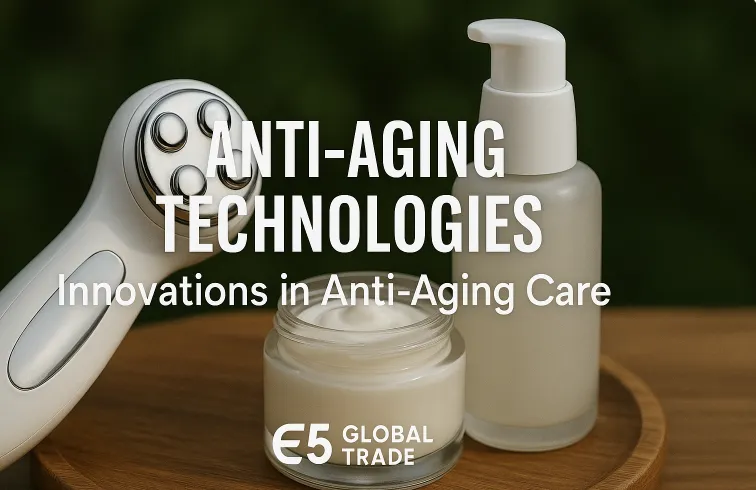Anti-Aging Technologies: Innovations in Anti-Aging Care The concept of anti-aging care is not just about delaying or concealing wrinkles; it also means slowing the skin's biological aging, increasing cell regeneration capacity, and strengthening the skin barrier. In recent years, the integration of science and technology in skincare has led to revolutionary innovations in the anti-aging category. These innovations have now reached the level of products and devices that can be applied not only in dermatology clinics but also at home. While retinol, hyaluronic acid, and peptides, commonly used in traditional anti-aging products, remain effective ingredients, new generation active ingredients have begun to target skin biology more deeply. For example, bakuchiol has emerged as a plant-based alternative to retinol. This ingredient, which exhibits the effects of retinol while reducing the risk of irritation, offers a significant advantage for sensitive skin. NAD+ boosters are molecules that increase cell energy. NAD+ is a coenzyme that decreases with aging and plays a critical role in cell metabolism. Integrating this molecule into skincare products delays the signs of aging by promoting cell renewal. Another innovation is the concept of epigenetic skincare. Epigenetics examines environmental factors that alter the expression of genes. Newly developed products include formulas designed to "silence" aging genes in skin cells or "activate" youth genes. This encourages skin to behave according to its biological potential, not age. Technology-based devices have also become essential for at-home anti-aging care. LED light therapy devices offer various effects on the skin using different wavelengths of light. Red light stimulates collagen production, while blue light prevents acne formation. Microcurrent devices gently stimulate facial muscles, resulting in a natural lifting effect. With regular use, these devices create a non-surgical facelift. More advanced at-home devices, such as radiofrequency and microneedle rollers, are also gaining attention. Radiofrequency heats the deep layers of the skin, triggering collagen and elastin production, while microneedling rollers activate the skin's self-renewal mechanism and facilitate the deep penetration of active ingredients. Artificial intelligence-powered skin analysis applications have also opened the door to personalized care. Smartphone cameras and algorithms can now instantly measure your skin age, moisture content, pigmentation, and elasticity. Based on this data, personalized ingredient recommendations and care plans can be created for you. This way, instead of "one-size-fits-all" products, truly personalized solutions are emerging. Biocompatible and biorenewable ingredients are also a key part of the sustainable anti-aging trend. Lab-grown biotechnological ingredients prevent the depletion of natural resources while increasing their effectiveness. For example, lab-grown human collagen or plant stem cell extracts are used to trigger rejuvenation signals in the skin. As a result, anti-aging is no longer just a cosmetic concept; it has become a multidisciplinary field where cell biology, genetics, device technology, and artificial intelligence intersect. Anti-aging care is no longer about "fewer wrinkles," but rather "healthier, more resilient, and more radiant skin." The biggest innovation is that these technologies are increasingly available to home users, bringing personal care routines to the laboratory level. An approach supported by accurate knowledge, consistency, and technology is enough to slow the aging process and preserve skin's natural youthfulness for many years.
E5 Global Trade | Yazılar
Anti-Aging Technologies: Innovations in Anti-Aging Care
Küresel Haber Ajansı
·


